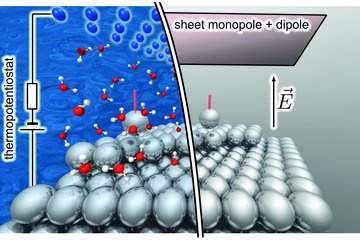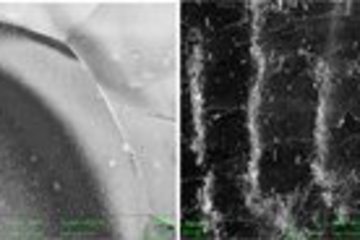All genres
281.
Poster
Corrosion of bulk Zn-Mg material libraries investigated with a scanning flow cell and downstream analytics. 63rd Annual Meeting of the International Society of Electrochemistry, Prague, Czech Republic (2012)
282.
Poster
Fast Screening of PEMFC-Catalysts with a Scanning Flow Cell System. 63rd Annual Meeting of the International Society of Electrochemistry, Prague, Czech Republic (2012)
283.
Poster
Online Monitoring of the Dissolution of Platinum during Electrochemical Experiments by Coupled ICP-MS. 63rd Annual Meeting of the International Society of Electrochemistry, Prague, Czech Republic (2012)
284.
Poster
Reduction and oxidation of hydrogen peroxide on polycrystalline platinum. Electrocatalysis: Present and Future - an ELCAT Meeting, Alicante, Spain (2011)
285.
Poster
Near Surface Ion Distribution and Buffer Effects during Electrochemical Reactions. 14th Austrian Chemistry Days, Linz, Austria (2011)
286.
Poster
The Effective Surface pH during Reactions at the Solid/Liquid Interface. 63rd Annual Meeting of the International Society of Electrochemistry, Prague, Czech Republic (2011)
287.
Poster
Electrochemical reduction of CO2 to fuels: Directions and perspectives. Electrochemistry 2010: From Microscopic Understanding to Global Impact, Bochum, Germany (2010)
288.
Poster
The Particle Size Effect in Electrocatalysis of Fuel Cell Reactions. Electrochemistry 2010, Bochum, Germany (2010)
289.
Poster
Stability of Pt alloy high surface area catalysts. International Conference on Materials for Energy, Karlsruhe, Germany (2010)
290.
Teaching
Advanced Methods in Electroanalytical Chemistry Part I. Lecture: Lecturing at Ruhr-Universität Bochum, Fakultät für Chemie und Biochemie, WS 2014/2015, Bochum, Germany, 2014-10 - 2015-03
291.
Teaching
Advanced Methods in Electroanalytical Chemistry Part II. Lecture: Lecturing at Ruhr-Universität Bochum, Fakultät für Chemie und Biochemie, SS 2015, Bochum, Germany, 2015-04 - 2015-09
292.
Teaching
Advanced Methods in Electroanalytical Chemistry Part I. Lecture: Lecturing at Ruhr-Universität Bochum, Fakultät für Chemie und Biochemie, WS 2013/2014, Bochum, Germany, 2013-10 - 2014-03
293.
Teaching
Advanced Methods in Electroanalytical Chemistry Part II. Lecture: Lecturing at Ruhr-Universität Bochum, Fakultät für Chemie und Biochemie, SS 2014, Bochum, Germany, 2014-04 - 2014-09
294.
Teaching
Physical chemistry of surfaces and interfaces. Lecture: Course for PhD students of the IMPRS Surmat, Ruhr-Universität Bochum, Bochum, Germany, October 01, 2013 - October 31, 2013
295.
Teaching
Advanced Methods in Electroanalytical Chemistry Part II. Lecture: Lecturing at Ruhr-Universität Bochum, Fakultät für Chemie und Biochemie, SS 2013, Bochum, Germany, 2013-04 - 2013-09
296.
Teaching
Advanced Methods in Electroanalytical Chemistry Part I. Lecture: Lecturing at Ruhr-Universität Bochum, Fakultät für Chemie und Biochemie, WS 2012/2013, Bochum, Germany, 2012-10 - 2013-03
297.
Teaching
Advanced Methods in Electroanalytical Chemistry Part II. Lecture: Lecturing at Ruhr-Universität Bochum, Fakultät für Chemie und Biochemie, SS 2012, Bochum, Germany, April 01, 2012 - September 30, 2012
298.
Thesis - PhD
Stability investigations of iridium-based catalysts towards acidic water splitting. Dissertation, Ruhr-Universität Bochum, Bochum, Germany (2017)
299.
Thesis - PhD
Towards On-Site Production of Hydrogen Peroxide with Gold-Palladium catalysts in Electrocatalysis and Heterogeneous Catalysis. Dissertation, Ruhr-Universität Bochum, Bochum, Germany (2017)
300.
Thesis - PhD
Performance of catalysts in electrode structure – bridging the gap between fundamental catalyst properties and behavior in real applications. Dissertation, Ruhr-Universität Bochum, Fakultät für Maschinenbau, Bochum, Germany (2017)











